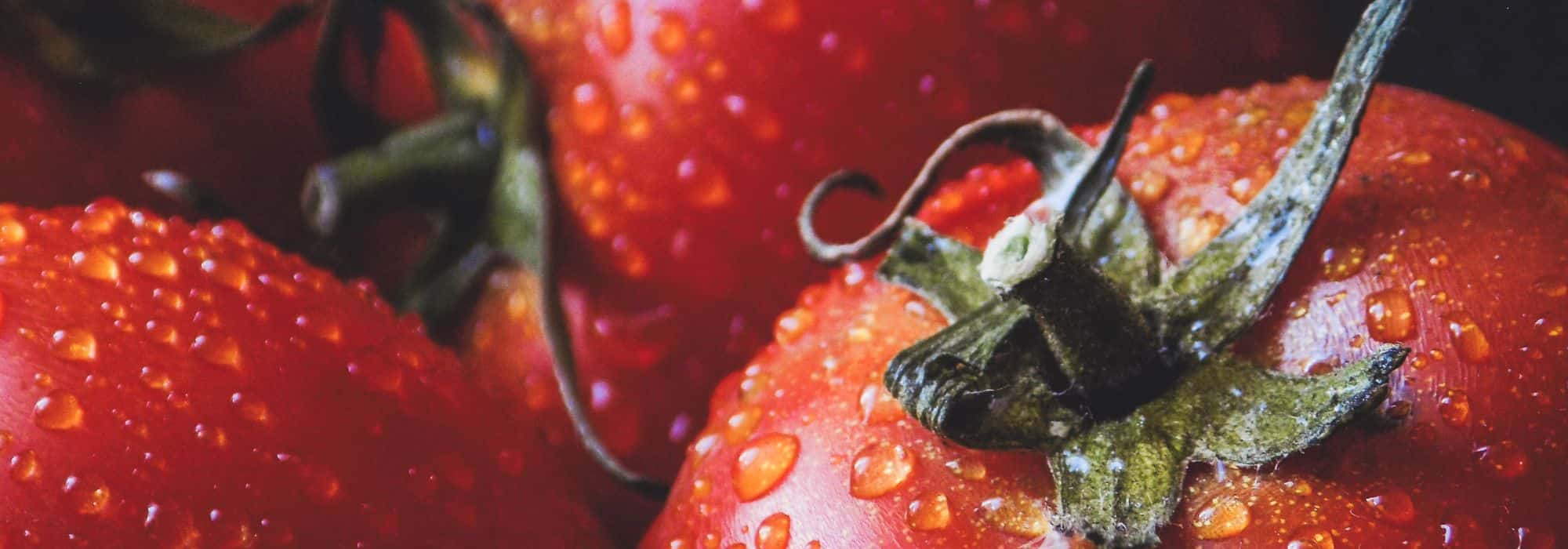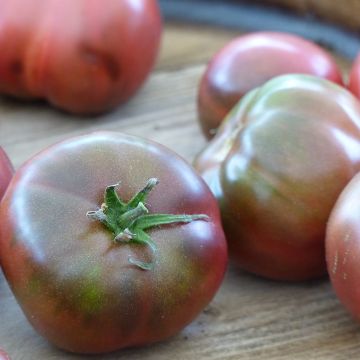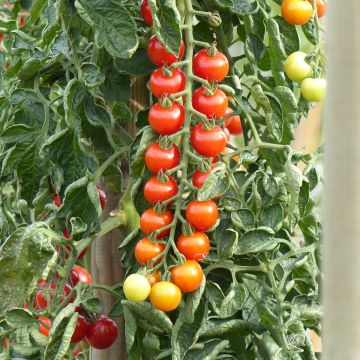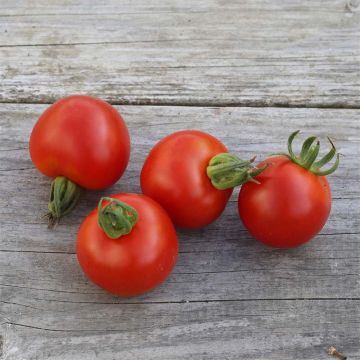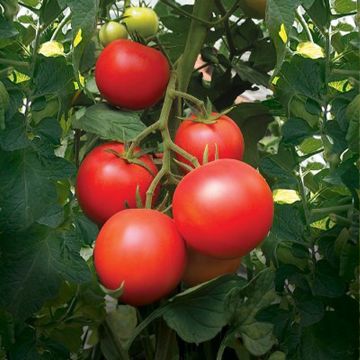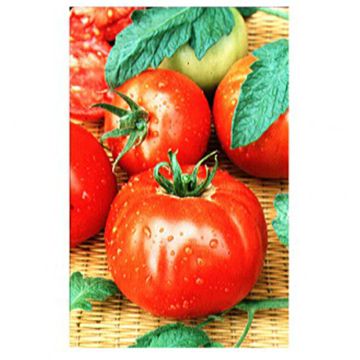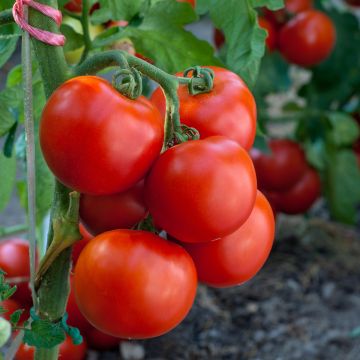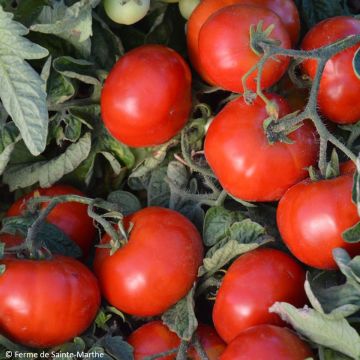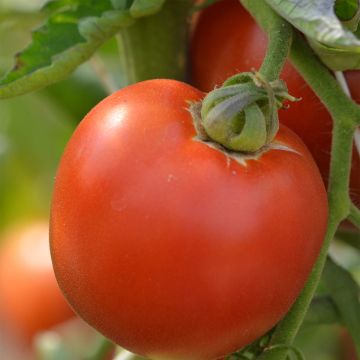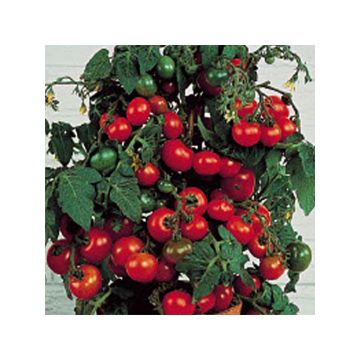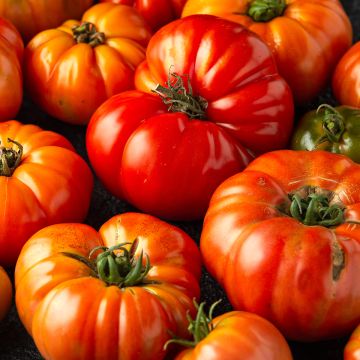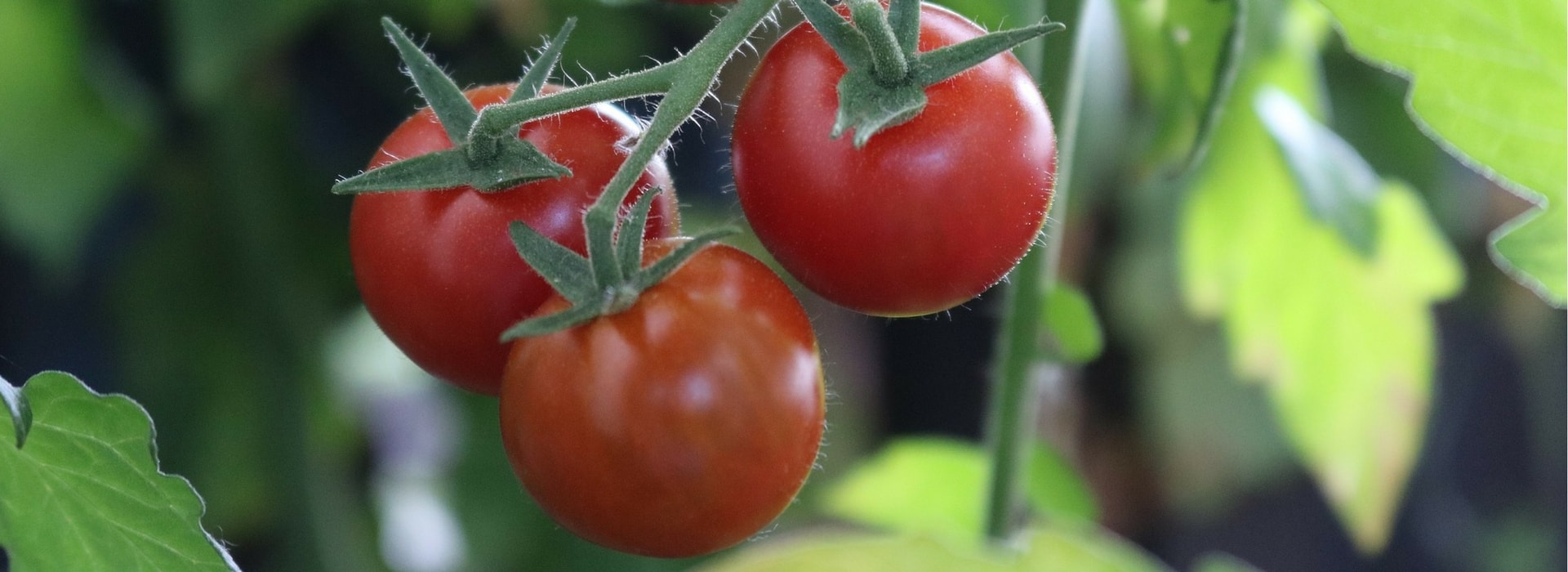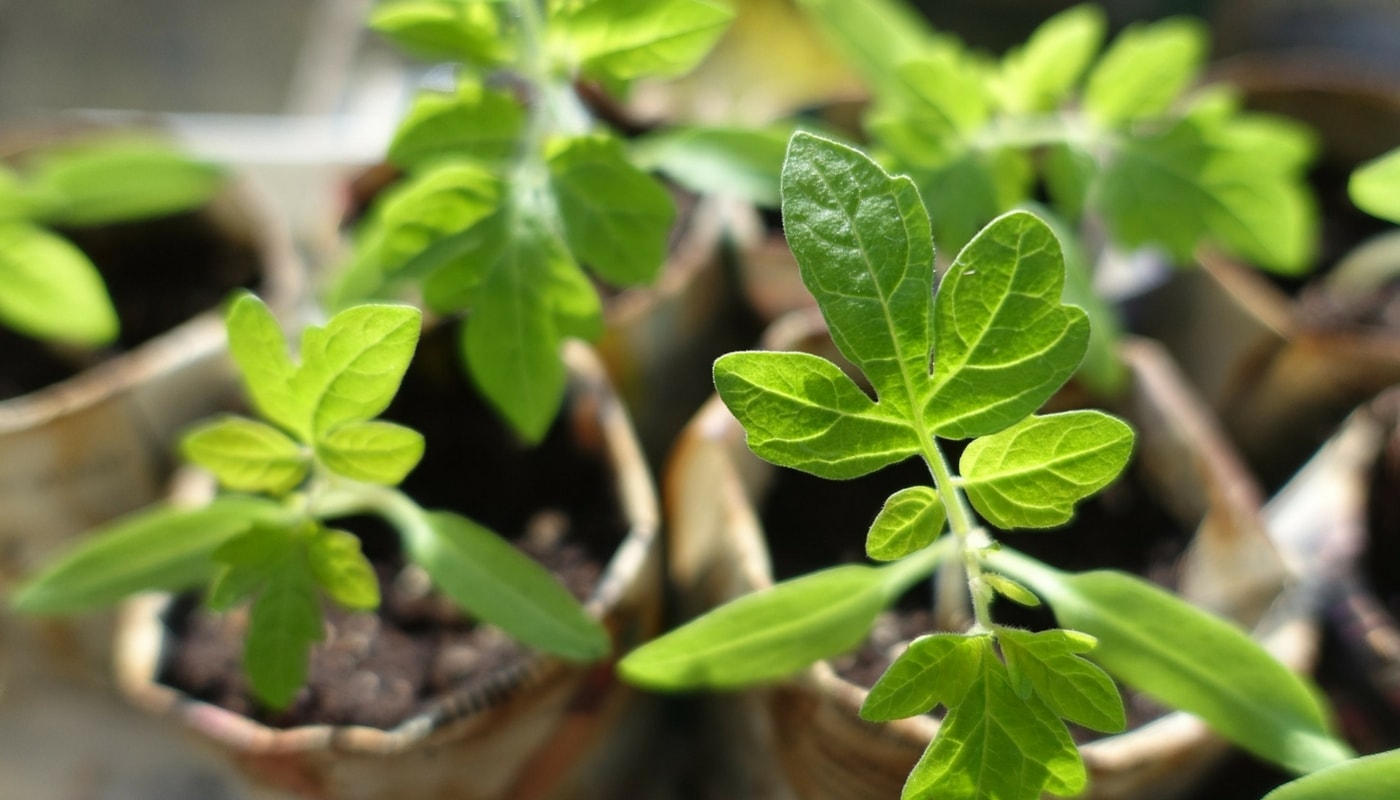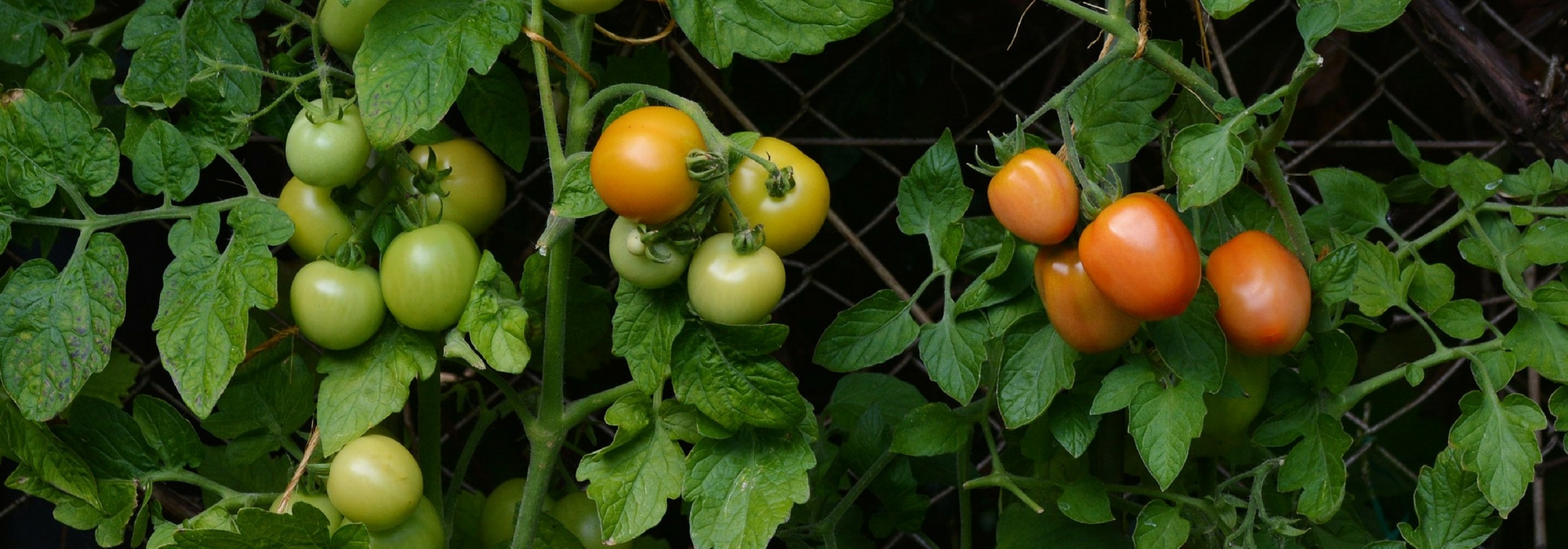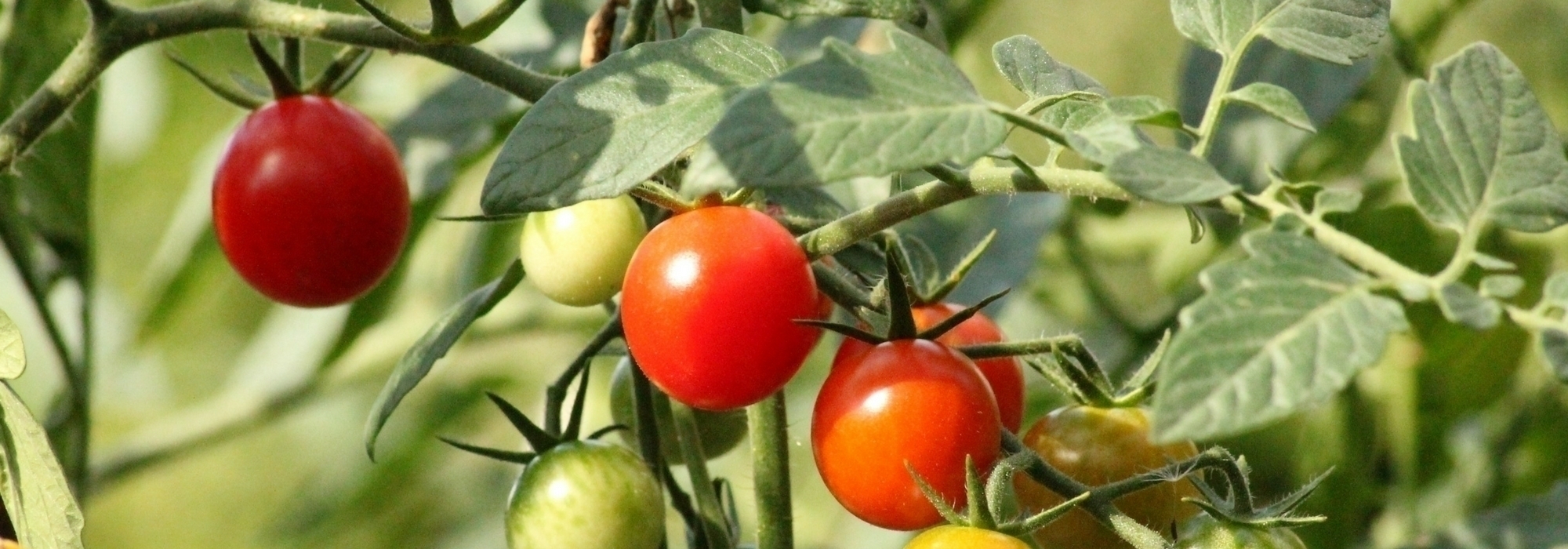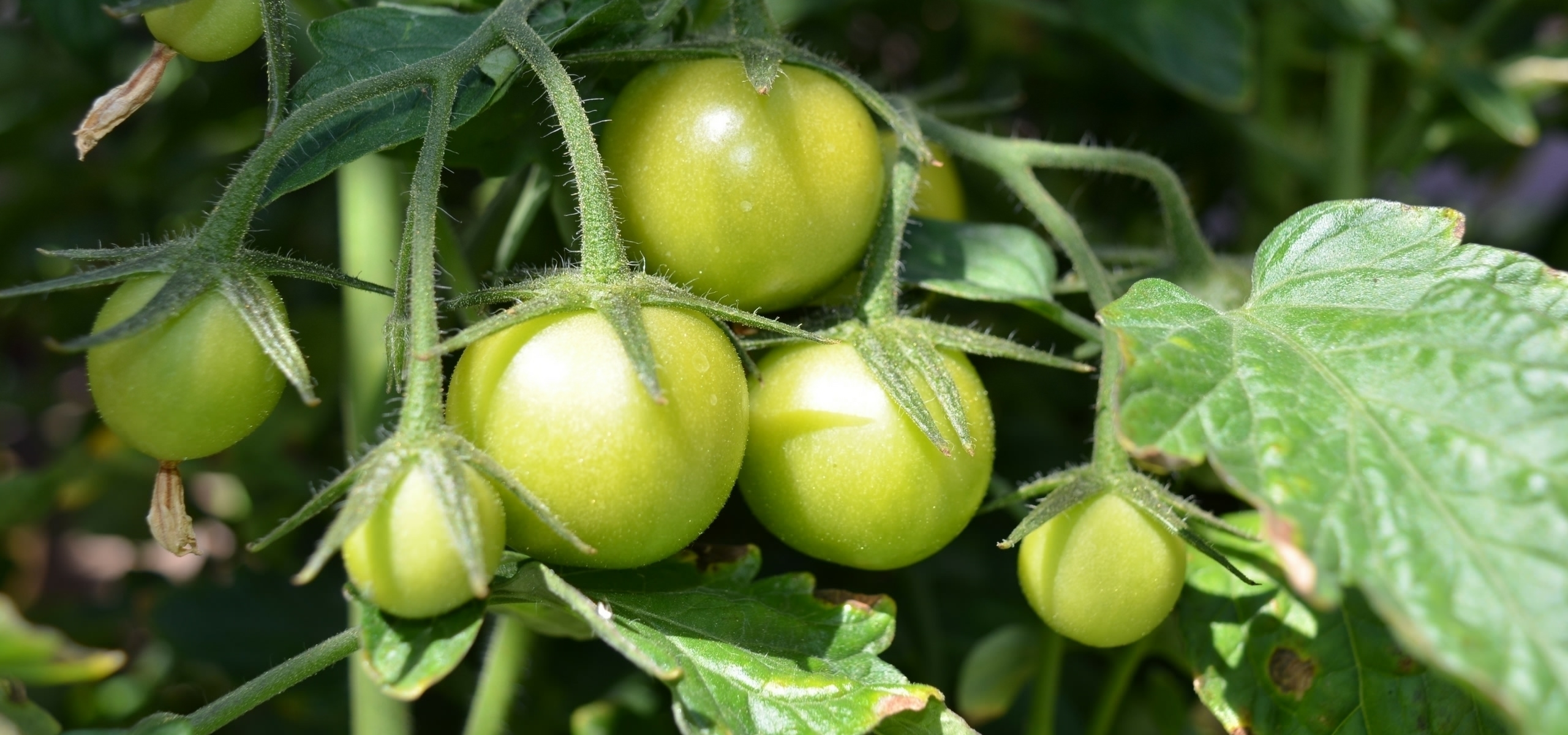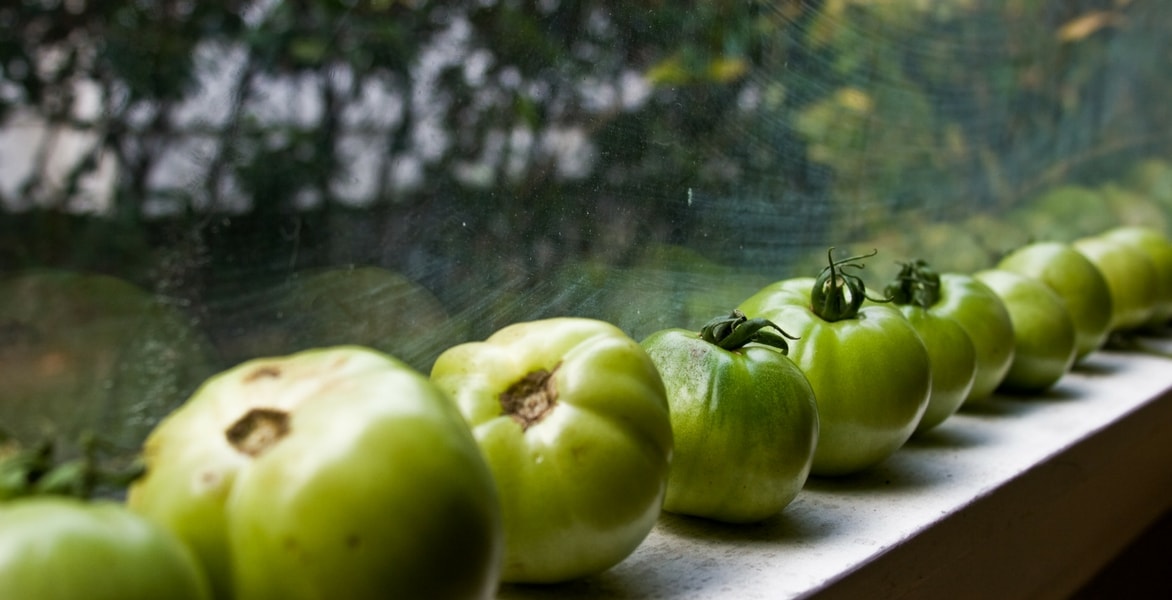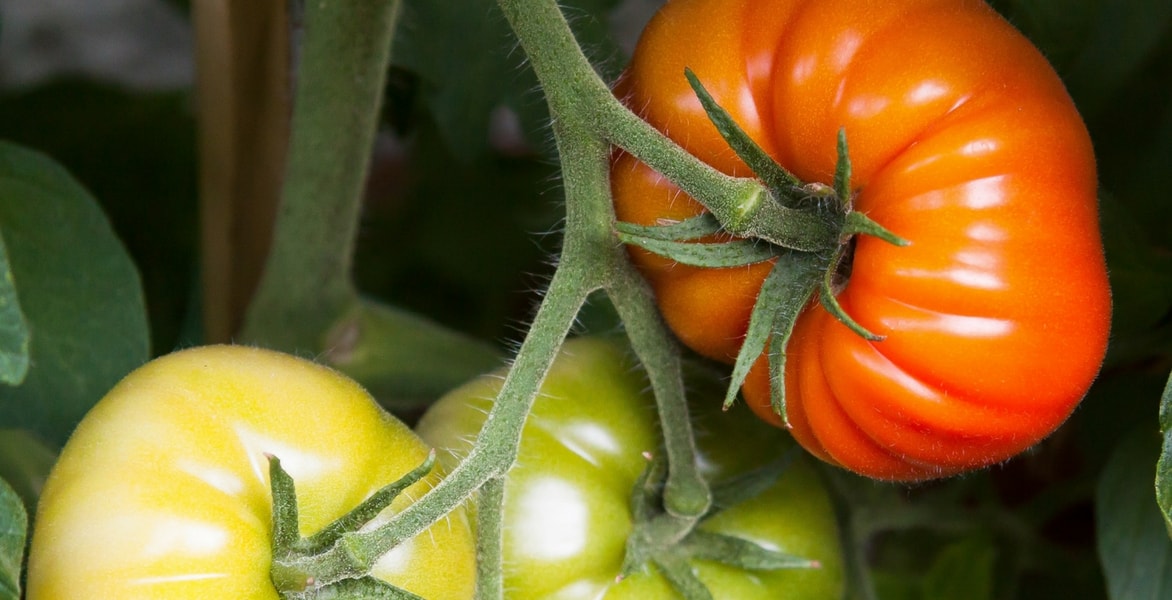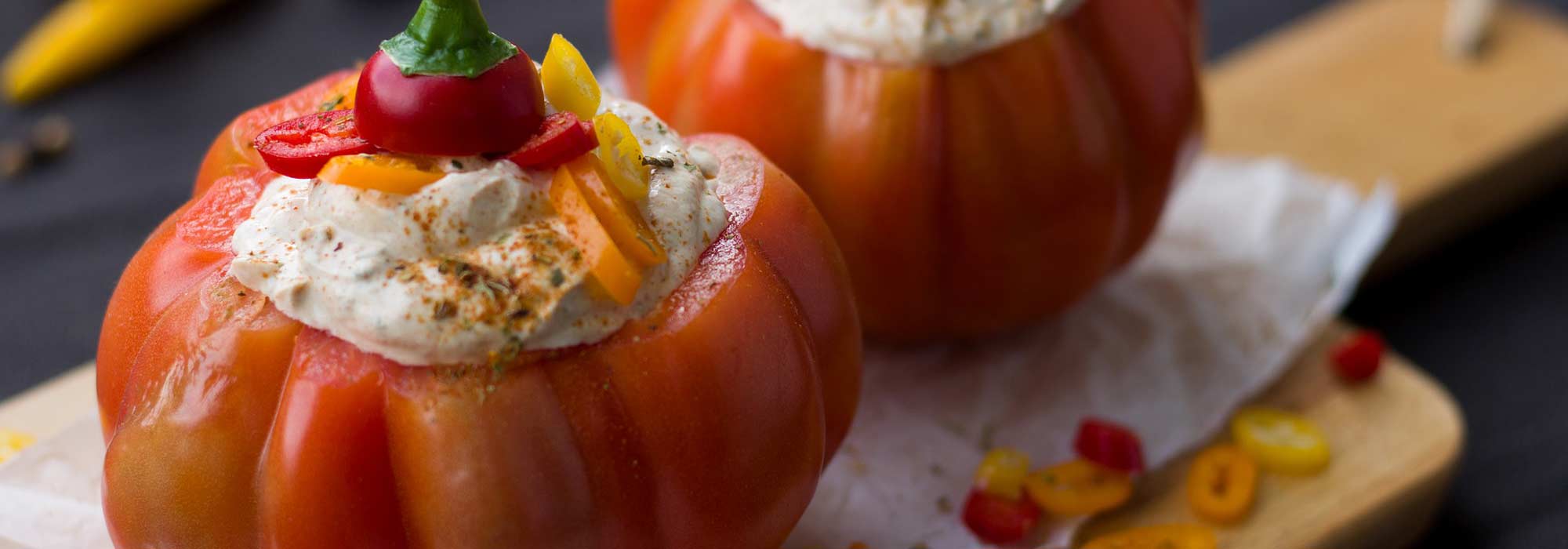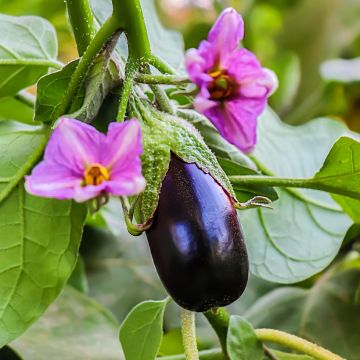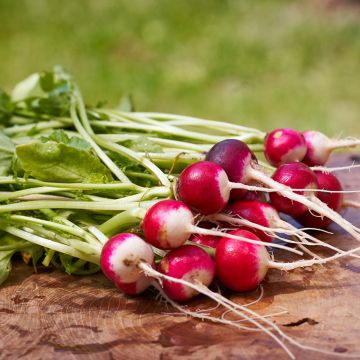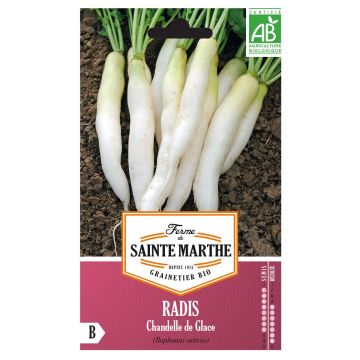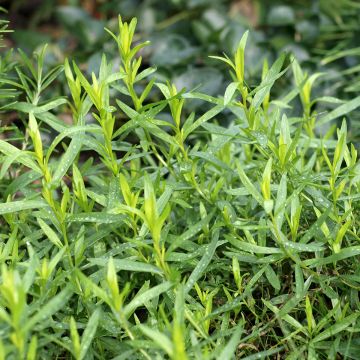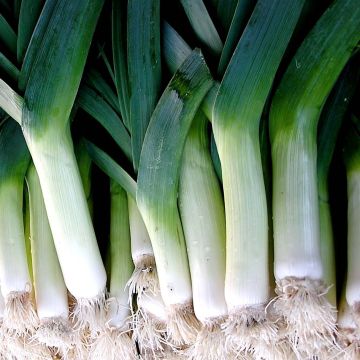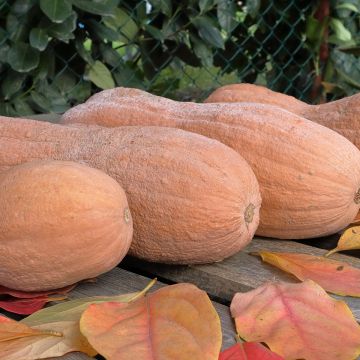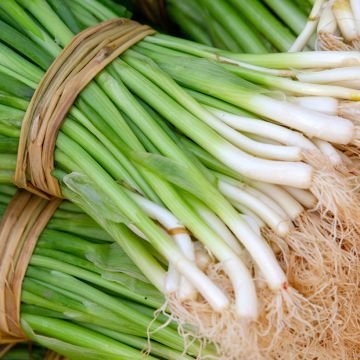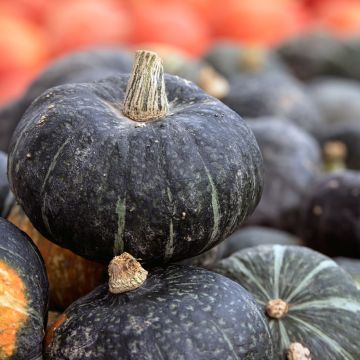

Tomato Fournaise F1 seeds
Tomato Fournaise F1 seeds
Solanum lycopersicum Fournaise F1
Salad Tomato, Slicing Tomato
Special offer!
Receive a €20 voucher for any order over €90 (excluding delivery costs, credit notes, and plastic-free options)!
1- Add your favorite plants to your cart.
2- Once you have reached €90, confirm your order (you can even choose the delivery date!).
3- As soon as your order is shipped, you will receive an email containing your voucher code, valid for 3 months (90 days).
Your voucher is unique and can only be used once, for any order with a minimum value of €20, excluding delivery costs.
Can be combined with other current offers, non-divisible and non-refundable.
Home or relay delivery (depending on size and destination)
Schedule delivery date,
and select date in basket
This plant carries a 6 months recovery warranty
More information
We guarantee the quality of our plants for a full growing cycle, and will replace at our expense any plant that fails to recover under normal climatic and planting conditions.
Description
The Fournaise F1 tomato is one of the first hybrid varieties created by INRA in the 1950s. Its remarkable earliness allows for harvesting its first tomatoes approximately two months after transplanting, which is two to four weeks earlier than most other varieties. The fruits, weighing 100 to 300 g, are bright red and shiny, of excellent taste quality, allowing for a variety of uses in cooking, from salads to stuffed dishes.
Sow this 'Fournaise' tomato with an indeterminate habit from February to May, for a harvest from late June to October. This variety shows good resistance to several diseases, including mildew and tomato mosaic virus.
Originating from South and Central America, the tomato was already cultivated by the Incas long before the arrival of the Conquistadors. The diversity of this solanaceous plant is impressive, with fruits of all colours, shapes, and sizes. The term "tomato" comes from the Inca word Tomatl, which refers to both the plant and its fruit. Ancient varieties have indeterminate growth and can live up to two years, while newer determinate varieties form compact bushes that do not require staking or trellising.
Like many foods from the New World, such as beans, corn, or potatoes, the tomato took time to establish itself in our kitchens. Initially grown for its aesthetic and medicinal qualities, it was long considered toxic due to its resemblance to the mandrake fruit. It was only in the early 20th century that it became a staple on our tables.
The tomato plant is a perennial herbaceous plant in tropical climates but grown as an annual in our latitudes. Its small yellow flowers, clustered in cymes, transform into colourful and nutritious fruits. Low in calories and rich in water, the tomato is also a valuable source of lycopene, a powerful antioxidant that becomes even more available after cooking. It is also rich in vitamin C, provitamin A, and trace elements.
Today, the tomato is a summer essential. Before choosing a variety, it is important to consider its intended use (salads, sauces, cooking, etc.) and when you wish to harvest it, depending on the region's sunlight. Although it requires plenty of sun and warmth, the tomato doesn't necessarily need a lot of space, and small-fruited varieties can even be grown in pots on a balcony. It is worth noting that immature fruits, stems, and leaves contain solanine, a toxic substance not to be consumed.
Tomatoes are generally harvested between 50 and 100 days after transplanting, depending on the variety. They are ripe when the fruit has taken on its final colour and has a slightly softened texture while remaining firm. For better storage, pick tomatoes with their stems.
Tomatoes can be stored for a few days in the refrigerator or at room temperature, but they can also be dried, preserved, frozen, or made into sauces. To confit tomatoes, simply cut them in half, season them, and slow cook them in the oven at a low temperature. They can then be preserved in olive oil to enhance their flavour.
The gardener's tip: It is advisable to grow several tomato varieties each year to minimise the risk of crop loss in case of climatic problems or diseases. To prevent "blossom end rot" (a calcium deficiency), a comfrey maceration spray can be useful. When transplanting, bury the plant up to the first leaves to promote good root development, and remember that tomatoes pair perfectly with basil, both in the garden and in the kitchen.
Harvest
Plant habit
Foliage
Botanical data
Solanum
lycopersicum
Fournaise F1
Solanaceae
Salad Tomato, Slicing Tomato
Cultivar or hybrid
Annual
Other Tomato seeds
View all →Planting and care
Soil preparation: Tomato seedlings are extremely easy to grow. Sun and warmth play a crucial role in the success of this crop. They can thrive in any type of soil, although they prefer rich and well-draining ones. You can improve the substrate by adding a bit of sand if it is too compact.
Sowing under glass: From mid-February to May, sow indoors or in heated greenhouses in trays at around 20°C. Bury the seeds under 5 to 7 mm of seed compost as they need darkness to germinate. Avoid using fertiliser at this initial stage, as you might risk burning the future roots. Tomato plant growth is very rapid: tomato seeds usually sprout within two weeks on average. Do not discard a tray if no germination has occurred during this time, as some varieties are slow. When the plants have reached about fifteen centimetres, consider transplanting.
Transplanting in open ground: Once all risk of frost has passed, usually after mid-May, transplant your plants into open ground. Choose the sunniest and warmest spots in the garden. At the base of a wall facing due South is an ideal position. Loosen the soil and dig a hole at least 3 to 4 times the volume of your plant's root system. Add some well-decomposed compost at the bottom. Plant your seedling, which can be buried up to the first leaves, then backfill. Firm the soil, create a basin around the plant, and water generously. Be careful not to wet the leaves to protect your plants from fungal diseases.
Maintenance: Using mulch at the base of your plants helps retain some moisture and reduces the need for weeding. Tomato plants do not require a lot of watering as their root system delves deep to find available resources. Water generously only in case of prolonged drought.
Seedlings
Care
Intended location
Planting & care advice
This item has not been reviewed yet - be the first to leave a review about it.
Similar products
Haven't found what you were looking for?
Hardiness is the lowest winter temperature a plant can endure without suffering serious damage or even dying. However, hardiness is affected by location (a sheltered area, such as a patio), protection (winter cover) and soil type (hardiness is improved by well-drained soil).

Photo Sharing Terms & Conditions
In order to encourage gardeners to interact and share their experiences, Promesse de fleurs offers various media enabling content to be uploaded onto its Site - in particular via the ‘Photo sharing’ module.
The User agrees to refrain from:
- Posting any content that is illegal, prejudicial, insulting, racist, inciteful to hatred, revisionist, contrary to public decency, that infringes on privacy or on the privacy rights of third parties, in particular the publicity rights of persons and goods, intellectual property rights, or the right to privacy.
- Submitting content on behalf of a third party;
- Impersonate the identity of a third party and/or publish any personal information about a third party;
In general, the User undertakes to refrain from any unethical behaviour.
All Content (in particular text, comments, files, images, photos, videos, creative works, etc.), which may be subject to property or intellectual property rights, image or other private rights, shall remain the property of the User, subject to the limited rights granted by the terms of the licence granted by Promesse de fleurs as stated below. Users are at liberty to publish or not to publish such Content on the Site, notably via the ‘Photo Sharing’ facility, and accept that this Content shall be made public and freely accessible, notably on the Internet.
Users further acknowledge, undertake to have ,and guarantee that they hold all necessary rights and permissions to publish such material on the Site, in particular with regard to the legislation in force pertaining to any privacy, property, intellectual property, image, or contractual rights, or rights of any other nature. By publishing such Content on the Site, Users acknowledge accepting full liability as publishers of the Content within the meaning of the law, and grant Promesse de fleurs, free of charge, an inclusive, worldwide licence for the said Content for the entire duration of its publication, including all reproduction, representation, up/downloading, displaying, performing, transmission, and storage rights.
Users also grant permission for their name to be linked to the Content and accept that this link may not always be made available.
By engaging in posting material, Users consent to their Content becoming automatically accessible on the Internet, in particular on other sites and/or blogs and/or web pages of the Promesse de fleurs site, including in particular social pages and the Promesse de fleurs catalogue.
Users may secure the removal of entrusted content free of charge by issuing a simple request via our contact form.
The flowering period indicated on our website applies to countries and regions located in USDA zone 8 (France, the United Kingdom, Ireland, the Netherlands, etc.)
It will vary according to where you live:
- In zones 9 to 10 (Italy, Spain, Greece, etc.), flowering will occur about 2 to 4 weeks earlier.
- In zones 6 to 7 (Germany, Poland, Slovenia, and lower mountainous regions), flowering will be delayed by 2 to 3 weeks.
- In zone 5 (Central Europe, Scandinavia), blooming will be delayed by 3 to 5 weeks.
In temperate climates, pruning of spring-flowering shrubs (forsythia, spireas, etc.) should be done just after flowering.
Pruning of summer-flowering shrubs (Indian Lilac, Perovskia, etc.) can be done in winter or spring.
In cold regions as well as with frost-sensitive plants, avoid pruning too early when severe frosts may still occur.
The planting period indicated on our website applies to countries and regions located in USDA zone 8 (France, United Kingdom, Ireland, Netherlands).
It will vary according to where you live:
- In Mediterranean zones (Marseille, Madrid, Milan, etc.), autumn and winter are the best planting periods.
- In continental zones (Strasbourg, Munich, Vienna, etc.), delay planting by 2 to 3 weeks in spring and bring it forward by 2 to 4 weeks in autumn.
- In mountainous regions (the Alps, Pyrenees, Carpathians, etc.), it is best to plant in late spring (May-June) or late summer (August-September).
The harvesting period indicated on our website applies to countries and regions in USDA zone 8 (France, England, Ireland, the Netherlands).
In colder areas (Scandinavia, Poland, Austria...) fruit and vegetable harvests are likely to be delayed by 3-4 weeks.
In warmer areas (Italy, Spain, Greece, etc.), harvesting will probably take place earlier, depending on weather conditions.
The sowing periods indicated on our website apply to countries and regions within USDA Zone 8 (France, UK, Ireland, Netherlands).
In colder areas (Scandinavia, Poland, Austria...), delay any outdoor sowing by 3-4 weeks, or sow under glass.
In warmer climes (Italy, Spain, Greece, etc.), bring outdoor sowing forward by a few weeks.






























